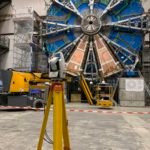Regular power line inspections are essential to ensure the reliability of electricity supply. The inspections of overground power submission lines include corridor clearance monitoring and fault identification. The power lines corridor is a three-dimensional space around power cables defined by a set distance. Any obstacles breaching this space should be detected, as they potentially threaten the safety of the infrastructure. Corridor clearance monitoring is usually performed either by a labor-intensive total station survey (TS), terrestrial laser scanning (TLS), or expensive airborne laser scanning (ALS) from a plane or a helicopter. This paper proposes a method that uses unmanned aerial vehicle (UAV) images to monitor corridor clearance. To maintain the adequate accuracy of the relative position of wires in regard to surrounding obstacles, the same data were used both to reconstruct a point cloud representation of a digital surface model (DSM) and a 3D power line. The proposed algorithm detects power lines in a series of images using decorrelation stretch for initial image processing, the modified Prewitt filter for edge enhancement, random sample consensus (RANSAC) with additional parameters for line fitting, and epipolar geometry for 3D reconstruction. DSM points intruding into the corridor are then detected by calculating the spatial distance between a reconstructed power line and the DSM point cloud representation. Problematic objects are localized by segmenting points into voxels and then subsequent clusterization. The processing results were compared to the results of two verification methods—TS and TLS. The comparison results show that the proposed method can be used to survey power lines with an accuracy consistent with that of classical measurements.
Power Line Monitoring
3D Reconstruction of Power Lines Using UAV Images
Monitor Corridor Clearance
Monitor Corridor Clearance



